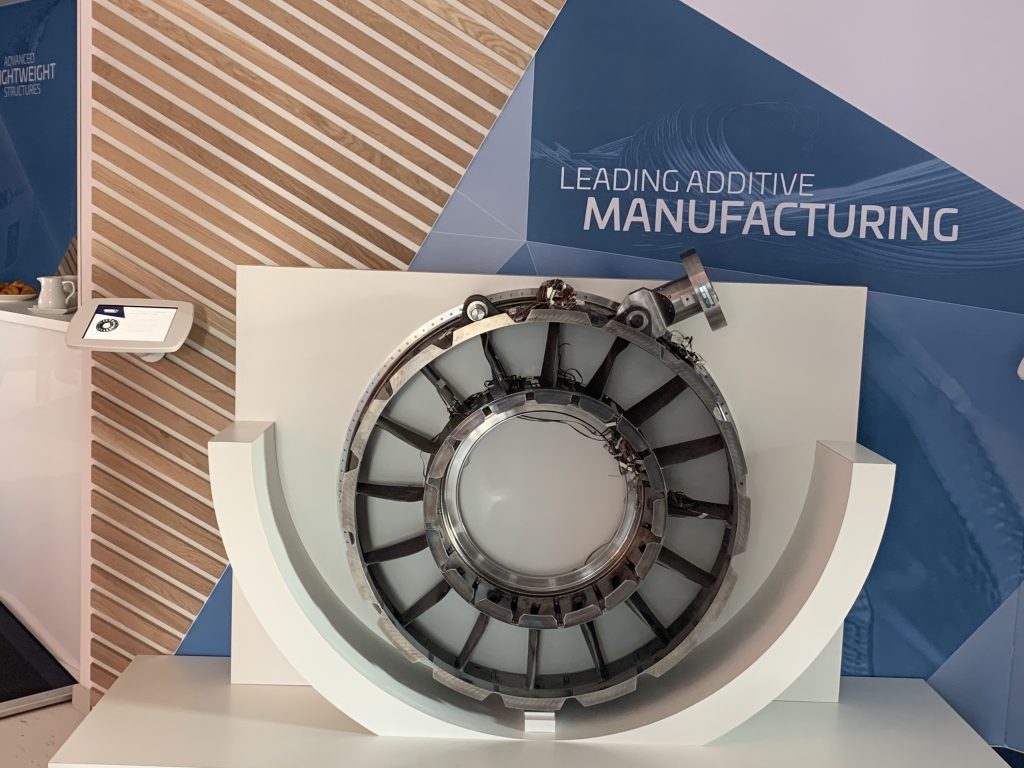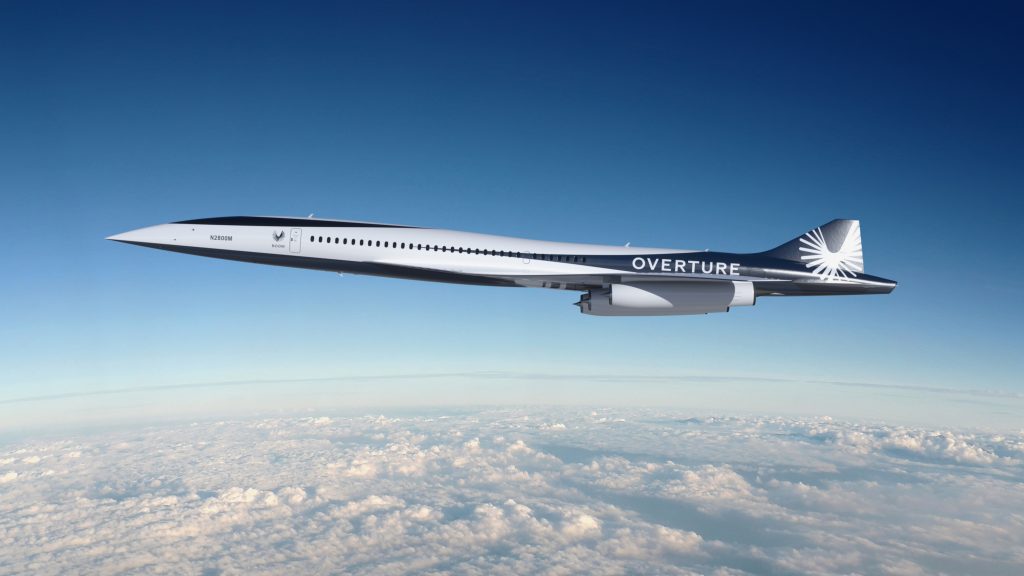Manufacturers and contractors from around the world have taken the opportunity to demonstrate that 3D printing-based innovation is alive and well in the aerospace sector at this week’s Farnborough International Airshow (FIA).
Despite the UK sizzling in record temperatures of up to 104F (40oC), global aerospace firms have descended on the town of Farnborough to showcase their latest technological achievements. Due to COVID-19, the event marks the first FIA in four years. As such, the show has acted as a meeting place for those in aviation, space, and defense to reconnect and establish cross-industry partnerships.
That said, this year’s FIA hasn’t just been about multimillion-dollar business deals; it has also seen MELD, GKN Aerospace, Burloak Technologies, Skyrora, and more open up on cutting-edge 3D printing advances. In one such case, MELD CEO Nanci Hardwick told 3D Printing Industry’s Paul Hanaphy, who attended the event early in the week, about how her firm uses 3D printing to meet US defense needs.
“You may know that the US Army is currently building the world’s largest metal 3D printer with MELD technology,” said Hardwick. “The motivation of the Army is to be able to create entire tank hulls that have a monolithic structure. So, no weldments, no weaknesses, due to melting metal, because this is the place of most weakness and therefore most threatening for soldiers’ lives inside the vehicle.”
“If we can create a monolithic structure with forged properties like MELD is capable of printing, then we increase warfighter safety.”

MELD 3D printing called into action
Working out of its base in Christiansburg, Virginia, MELD is the developer of a unique solid-state 3D printing method, in which materials don’t require melting during deposition. Unlike traditional metal 3D printing, this Additive Friction Stir Deposition process takes place below melting temperature and sees a rod of material pushed through a hollow rotating tool, in a way that ‘smears’ it onto a substrate below.
While the technology’s rotating tool has the effect of heating the material, and making it soft enough for such severe deformation to happen, feedstocks are never heated to the point of melting. Given that this process, in which the feed is then lifted and pushed back to enable layered deposition, doesn’t need to take place in a controlled atmosphere chamber, it also unlocks new large-format possibilities.
“This [our technology] enables so many opportunities,” explains Hardwick. “Because we’re staying below the melt temperature, we can print literally any metal, and there’s no other technology that I’m aware of that can say that at this scale. As we’re printing in an open atmosphere, there’s also no limit on size.”
As well as facilitating the creation of monolithic prints by fitting its technology to a 10 x 6.5 x 4-meter build volume Ingersoll Machine Tools system for the US Army, Hardwick adds that the firm’s technology has extensive repair application potential.
“Let’s say you’re in a forward operating situation, and you have a very large piece of turbomachinery equipment,” she says. “Our machines can be taken to that facility, operated in open air, and carry out repairs. In many cases, parts must be replaced because there is no existing repair technology. Now you can repair with the original material and satisfy concerns about repair [technologies] in that way.”

GKN issues DED innovation update
While MELD is primarily focused on the development of its 3D printing offering, GKN Aerospace operates mainly in the aerospace field. However, not wishing to miss out on the technology’s potential in the sector, the firm continues to contribute to many related R&D programs, which revolve around laser metal deposition by wire (LMD-w) or powder-based directed-energy deposition (DED) 3D printing.
Speaking to 3D Printing Industry at FIA 2022, Henrik Runnemalm VP of the firm’s Swedish Global Technology Centre, explained that since the early-2000s, it has been successful in adopting both technologies, with parts produced via the processes “out there flying today,” but it “continues to push the limit.”
One way GKN Aerospace is attempting to do so is by working as part of initiatives in the US, UK, and Sweden to hone different technical elements of DED, ranging from control systems to data acquisition. In doing so, Runnemalm says the company aims to build a portfolio that allows it to achieve “the holy grail of bringing certified products to market.”
“Our DED journey has been made,” added Runnemalm. “On the other side, we have explored different techniques, both laser-based and electron beam melting. It has been a little bit harder to come up with all the necessary steps to be able to certify these types of technologies, but we’re pushing them forward. Our ambition is to get to zero-defect [parts], we’re pushing 3D printing in that direction.”

Skyrora and Burloak reach for the stars
Over in the FIA’s Space Zone, meanwhile, UK-based rocket manufacturer Skyrora was exhibiting just days after announcing that its new engine test facility in Scotland has opened its doors. At the show, the company’s Business Communications Officer Nickie Finnegan explained why it chose to develop its Skyprint 2 3D printer, and deploy it in the build of the Skyrora XL rocket being assembled there.
“We did so for a few reasons,” said Finnegan. “We have sustainability as one of our core objectives. So it uses a lot less resources when produced through additive manufacturing, and we can also localize our supply chain by having that 3D printer on-site. Which is also good for economic purposes. As far as the actual design of the vehicles go, the materials we use are a lot more efficient in terms of weight.”
“We’re looking to reuse components in the future and we’re trying to find materials that are more robust to water, so there’s quite a few reasons for us using additive manufacturing.”
Elsewhere at the event, Canadian production service provider Burloak Technologies was also happy to talk 3D printing in the context of advanced space-faring components. During 2020, the firm revealed that it had been contracted by MacDonald, Dettwiler and Associates (MDA) to develop durable 3D printed satellite parts, via its fleet of laser powder bed fusion, electron beam and DED machines.
In an interview with 3D Printing Industry, Burloak Technologies’ VP and GM Jason Ball, provided a deep-dive into how adopting 3D printing in such builds helps clients realize lightweighting and part consolidation opportunities.
“You can take parts that are traditionally machined and make them significantly lighter, which really helps in aerospace,” elaborated Ball. “You can join parts together in the assembly process, you print them all in one part. We can also use exotic materials such as Invar, a thermally-stable material, to produce optical components for satellites. So there are a lot of niche things we can do to help customers out.”
“I think additive [manufacturing] is at the beginning of a journey if it’s going to be a disruptive technology,” he added. “People are going to learn how to design parts to take advantage of it. We’re going to see the portfolio grow as we go and consolidate more and more parts, and design them very differently to how we do today.”

Boom, Pratt & Whitney in aviation advances
Lastly, in civil aviation, it was announced that Pratt & Whitney had installed a Velo3D Sapphire system in the run-up to FIA 2022. Although the firm’s team had nothing to add on the subject at the event, it has a storied history of using the technology, having previously 3D printed turbofan engine parts alongside GKN Aerospace, and worked with Norsk Titanium to 3D print an integrally bladed rotor.
Ahead of the event, the company’s CEO Benny Buller said that he was eager to see how Pratt & Whitney “innovates its most mission-critical designs,” and “how the economies of scale of an in-house system help increase addressable use-cases.”
On the second day of FIA 2022, Boom Supersonic also unveiled a revamped design of its upcoming Overture supersonic commercial airliner. Following 26 million hours of simulated software designs, five wind tunnel tests, and 51 iterations, the revised aircraft now features a contoured fuselage and gull wings, designed to improve its drag and fuel efficiency, as well as its subsonic and transonic handling.
At the company’s press conference, its CEO Blake Scholl suggested that “state of the art technologies” were used to develop “every component and every system” in the new Overture, without specifying what these were. However, given that the craft’s XB-1 demonstrator includes 21 3D printed parts, it’s plausible that these design changes involved the technology on some level as well.
To stay up to date with the latest 3D printing news, don’t forget to subscribe to the 3D Printing Industry newsletter or follow us on Twitter or liking our page on Facebook.
For a deeper dive into additive manufacturing, you can now subscribe to our Youtube channel, featuring discussion, debriefs, and shots of 3D printing in-action.
Are you looking for a job in the additive manufacturing industry? Visit 3D Printing Jobs for a selection of roles in the industry.
Featured image shows an F-16C fighter jet on display at the Farnborough International Airshow. Photo by Paul Hanaphy.


